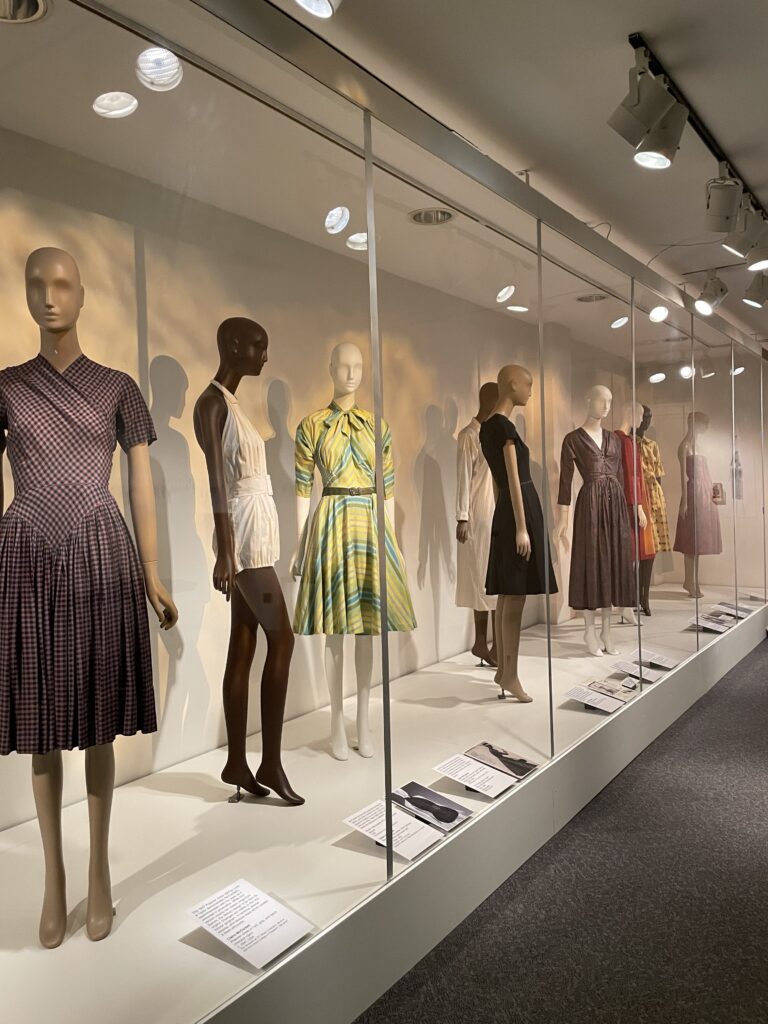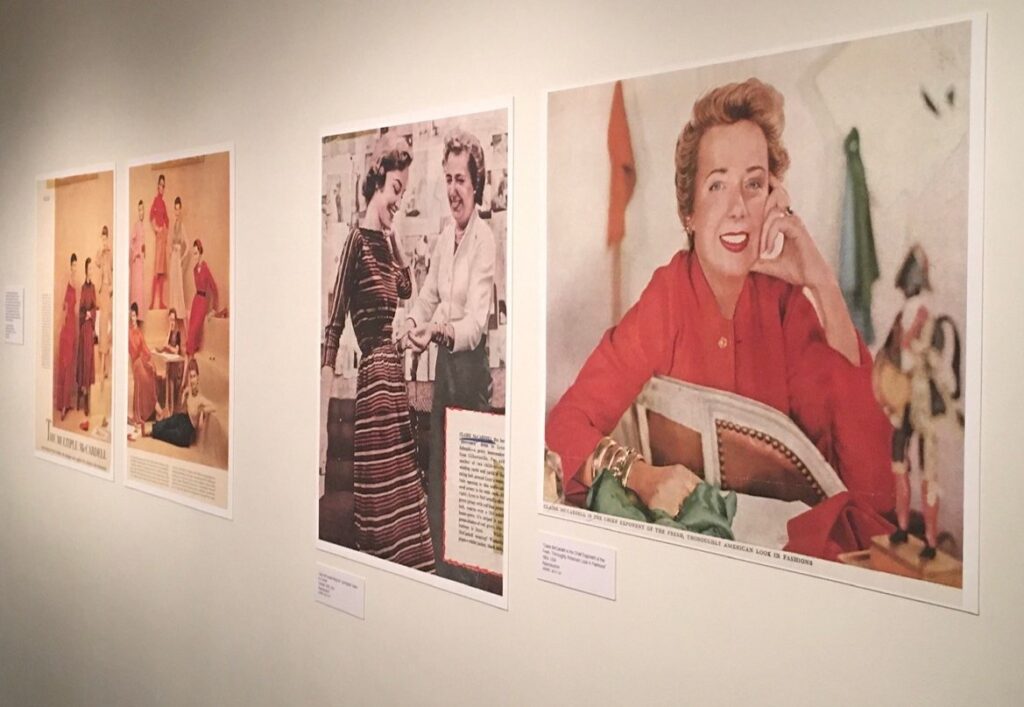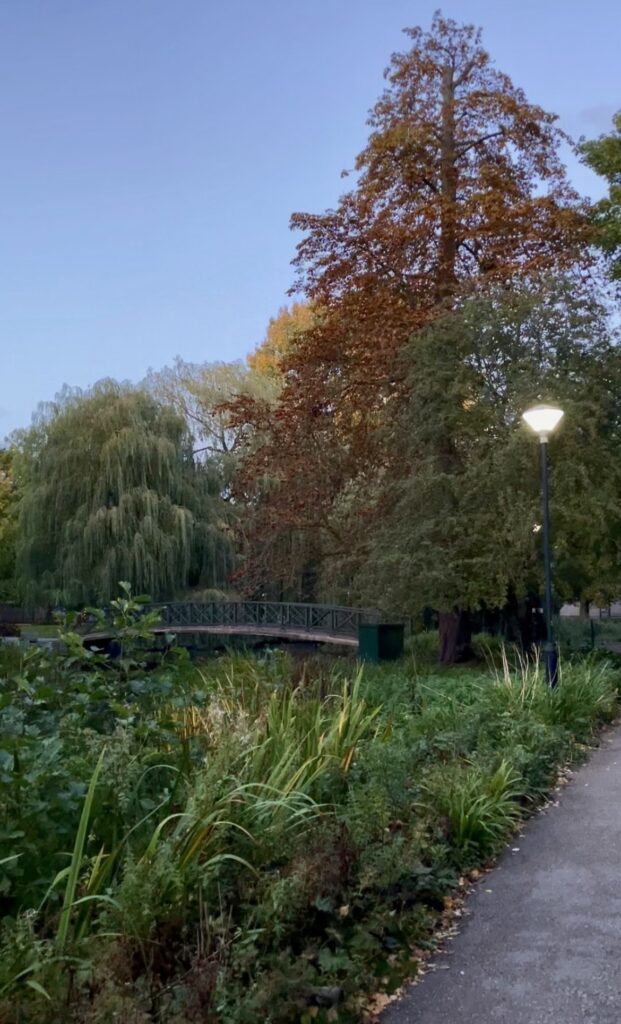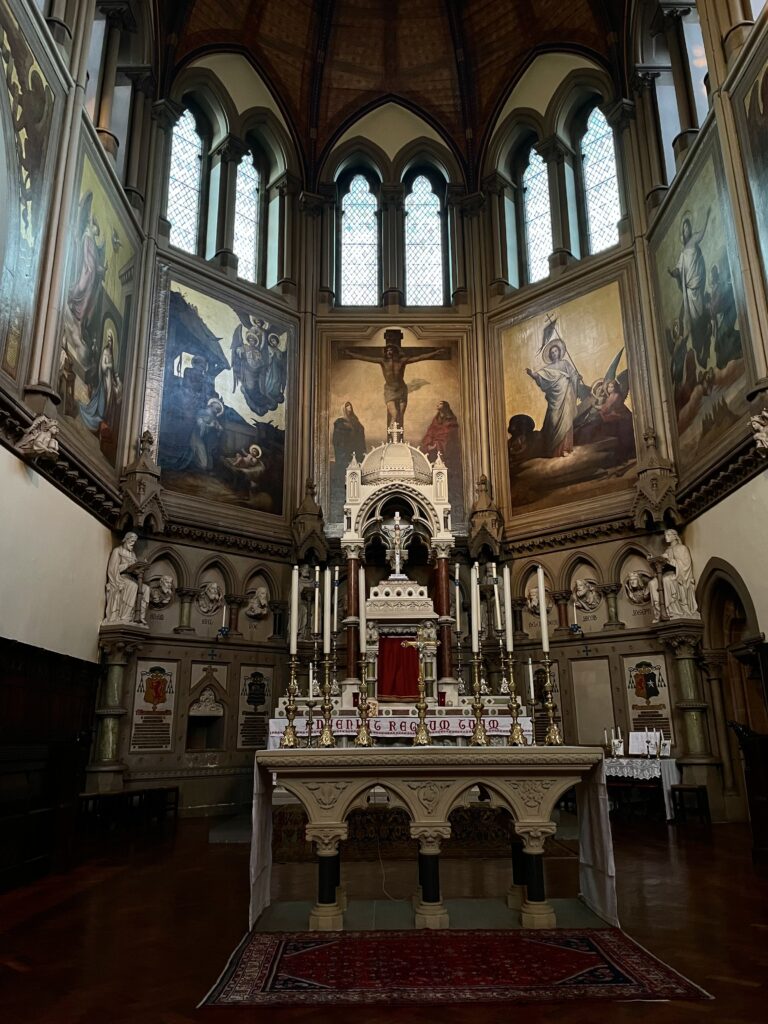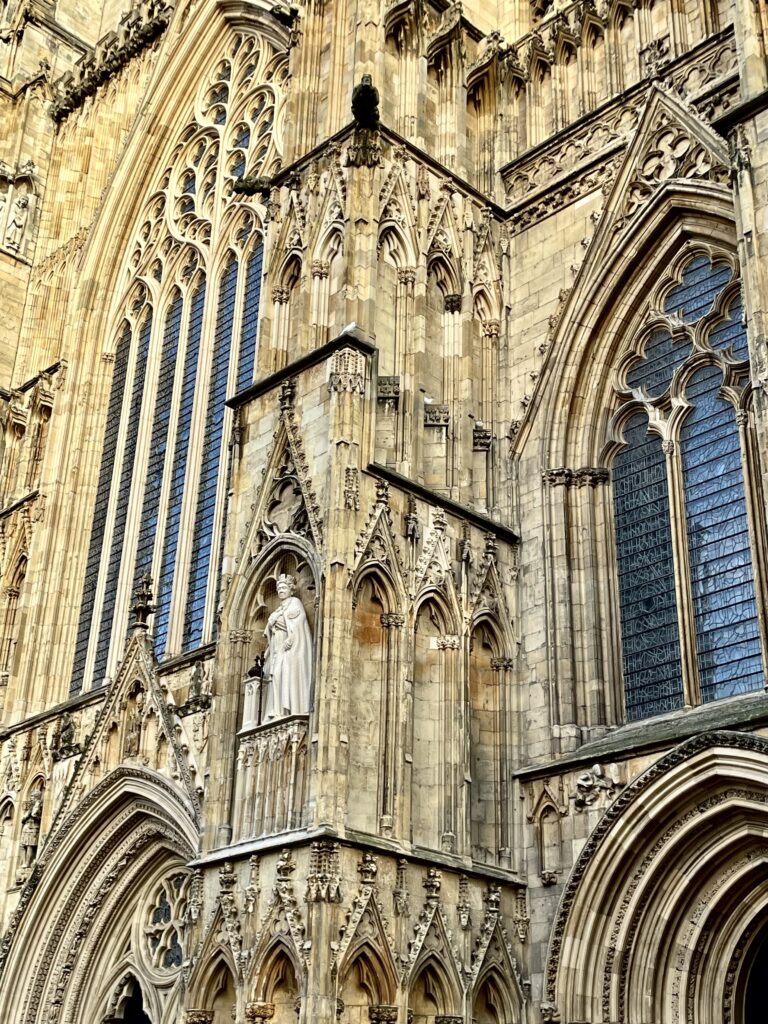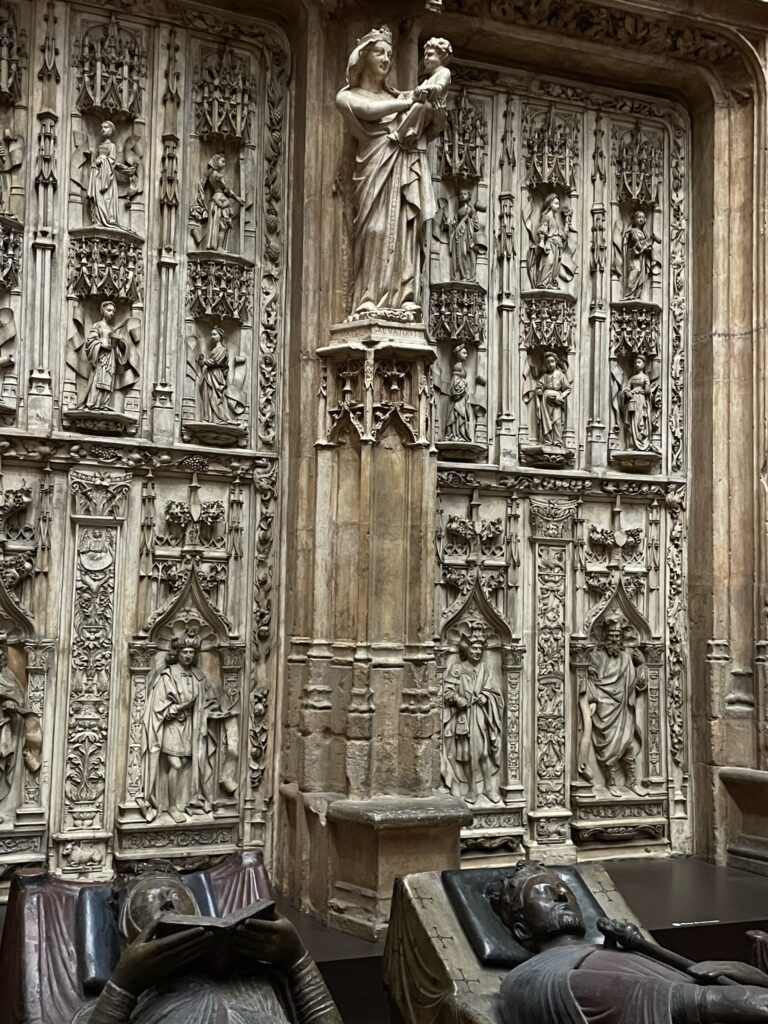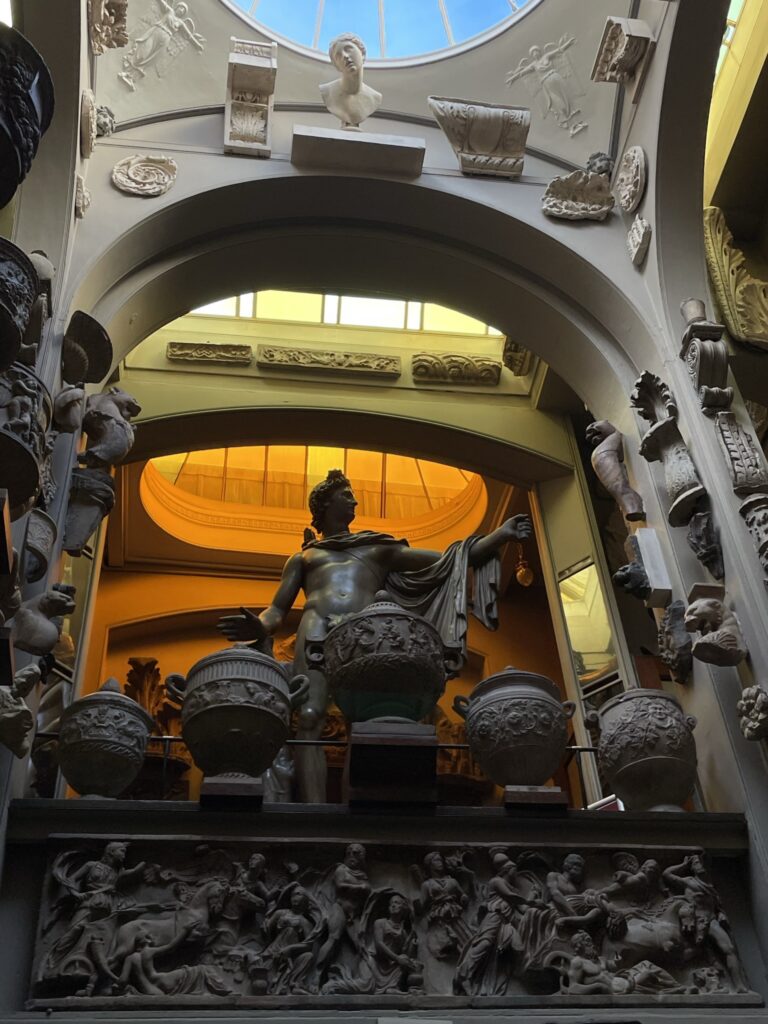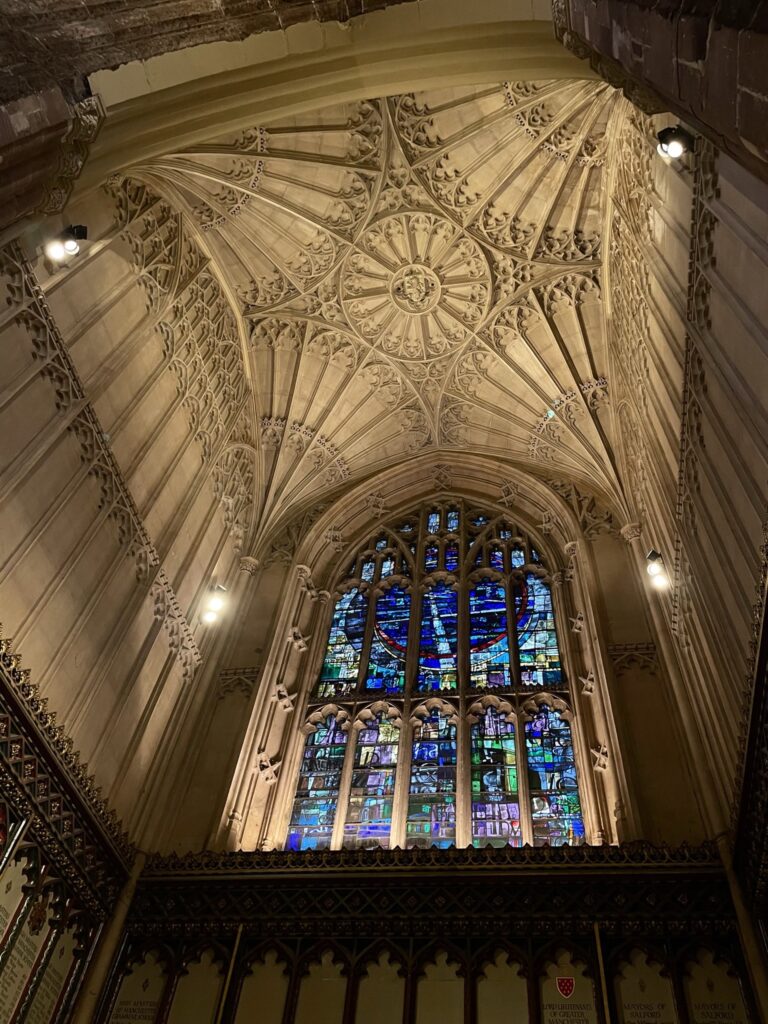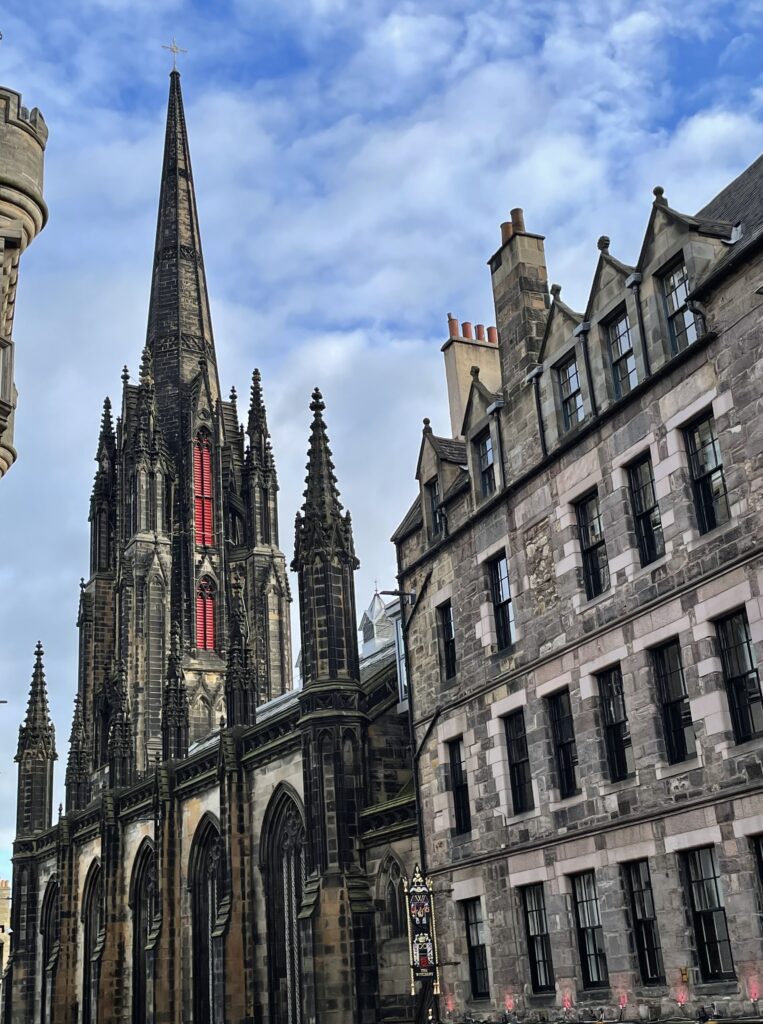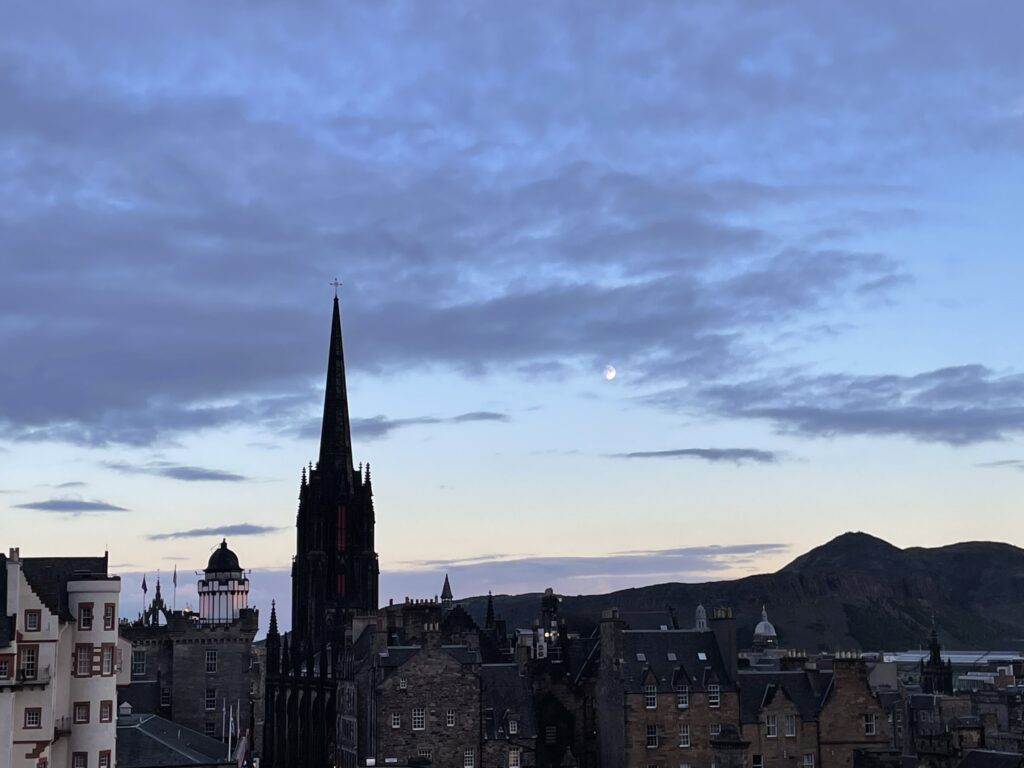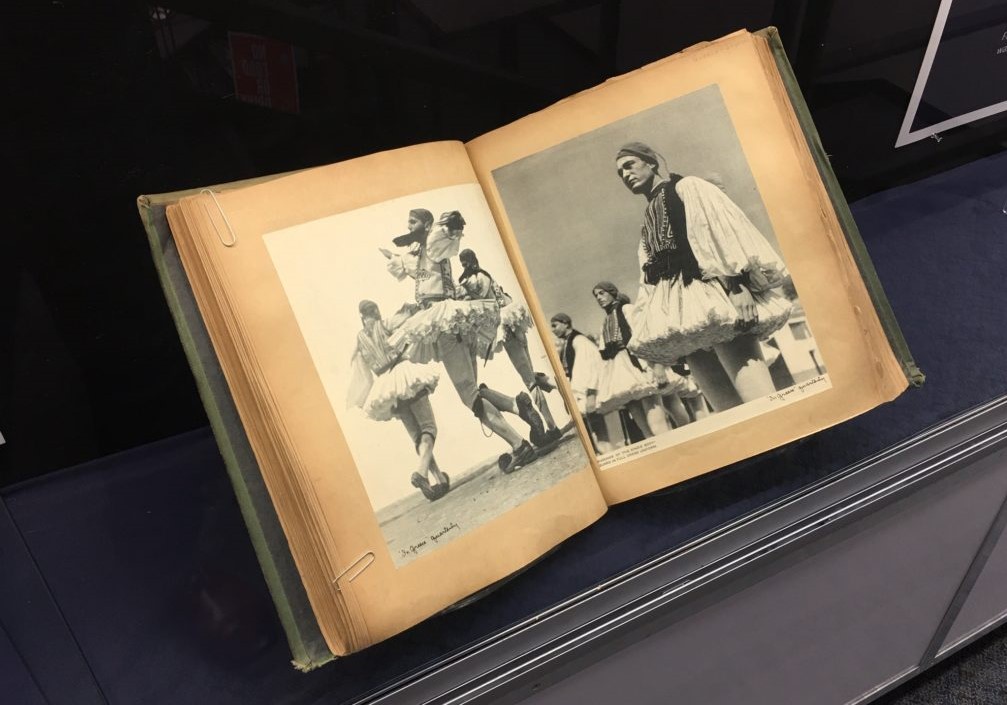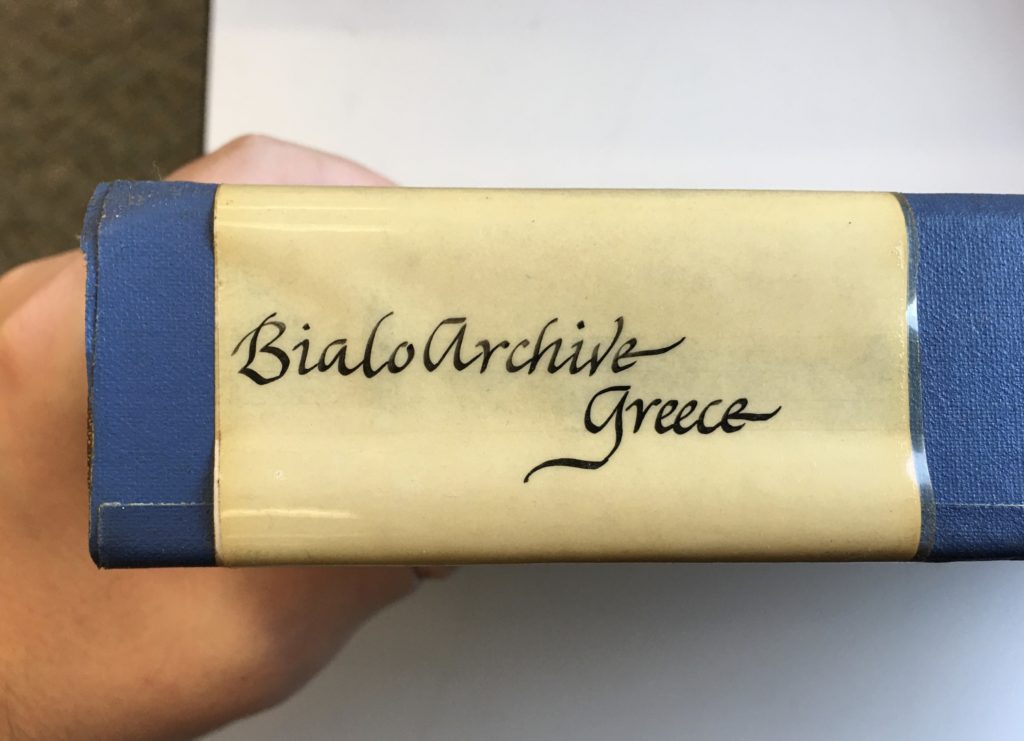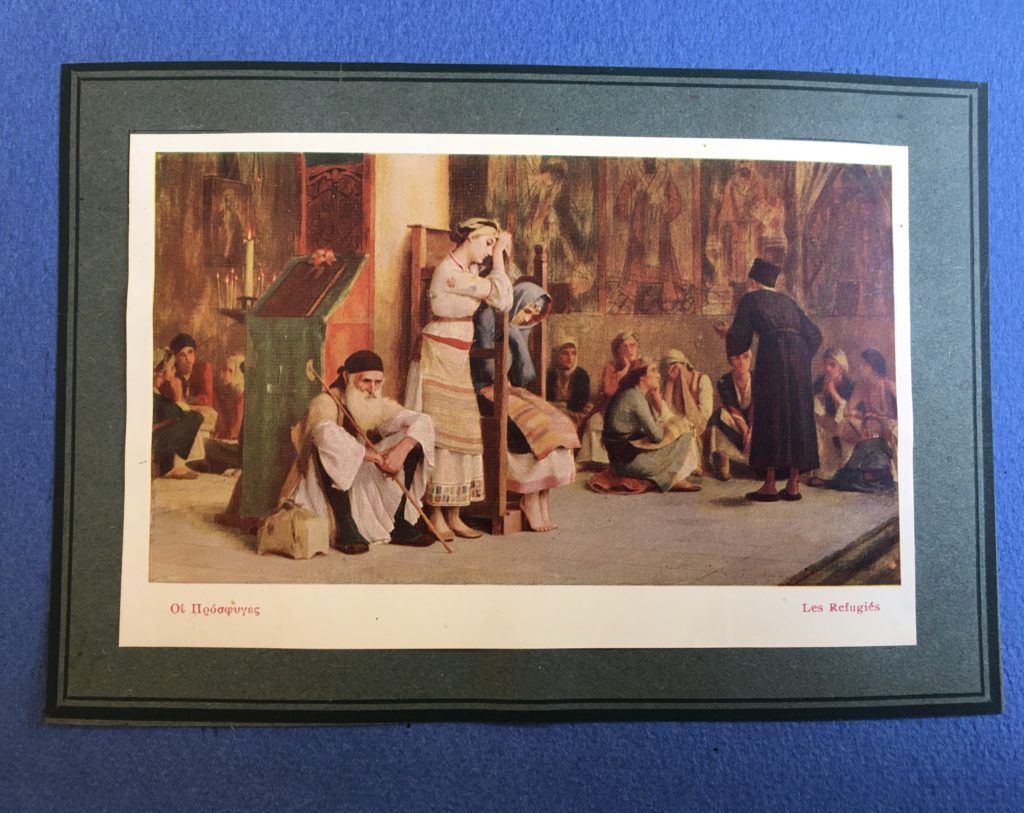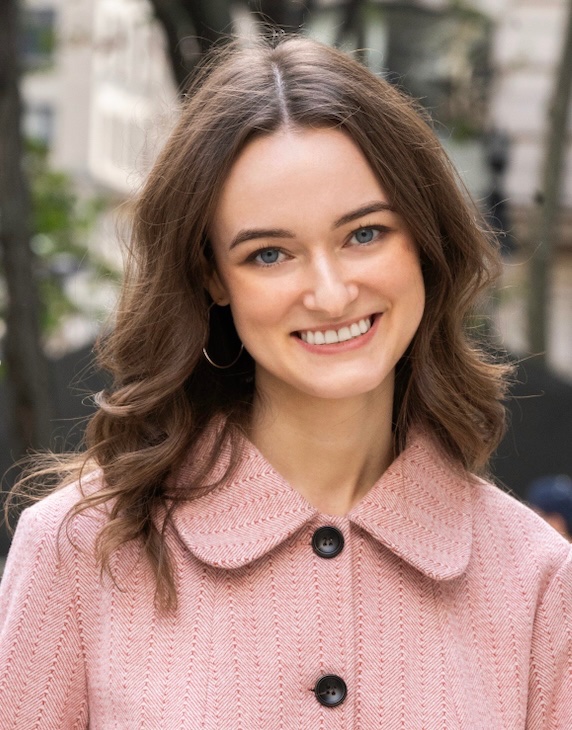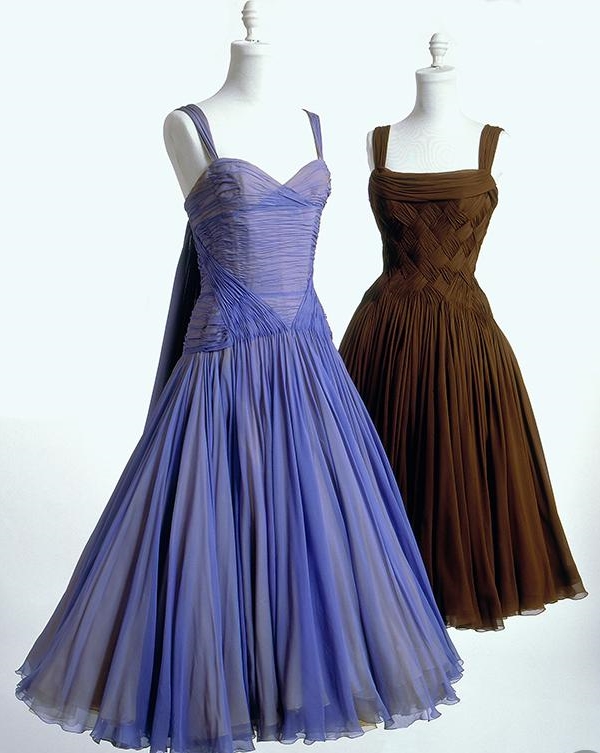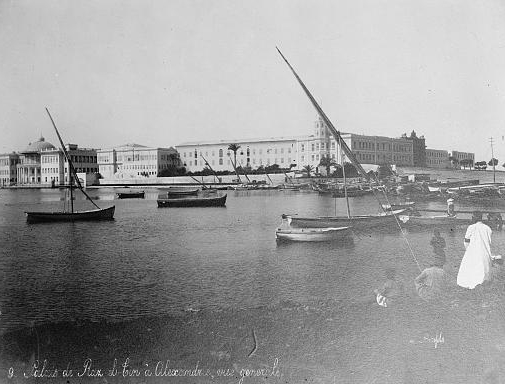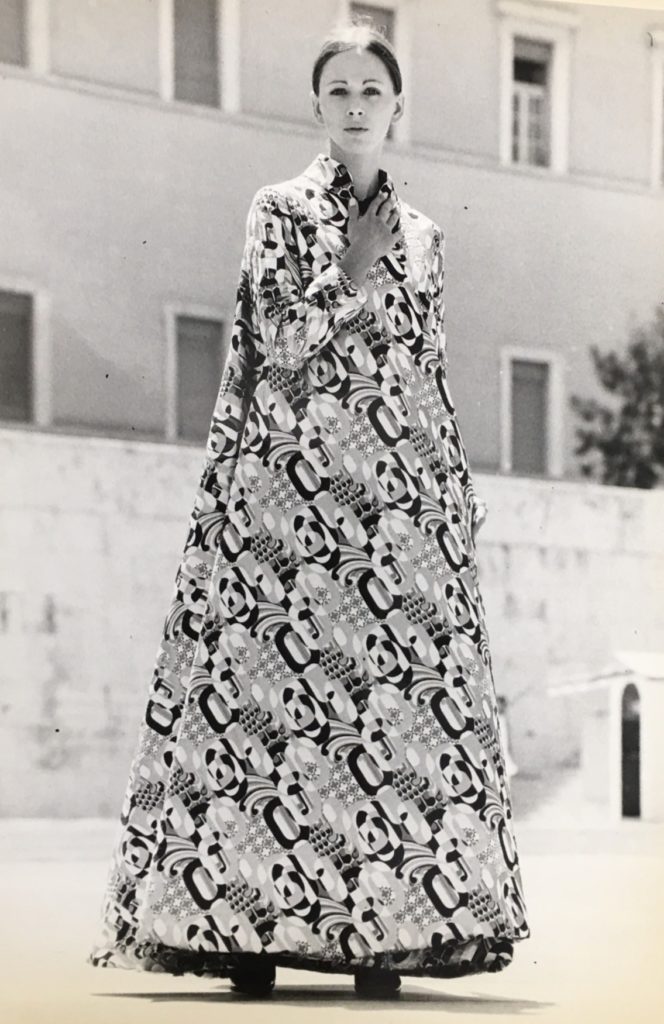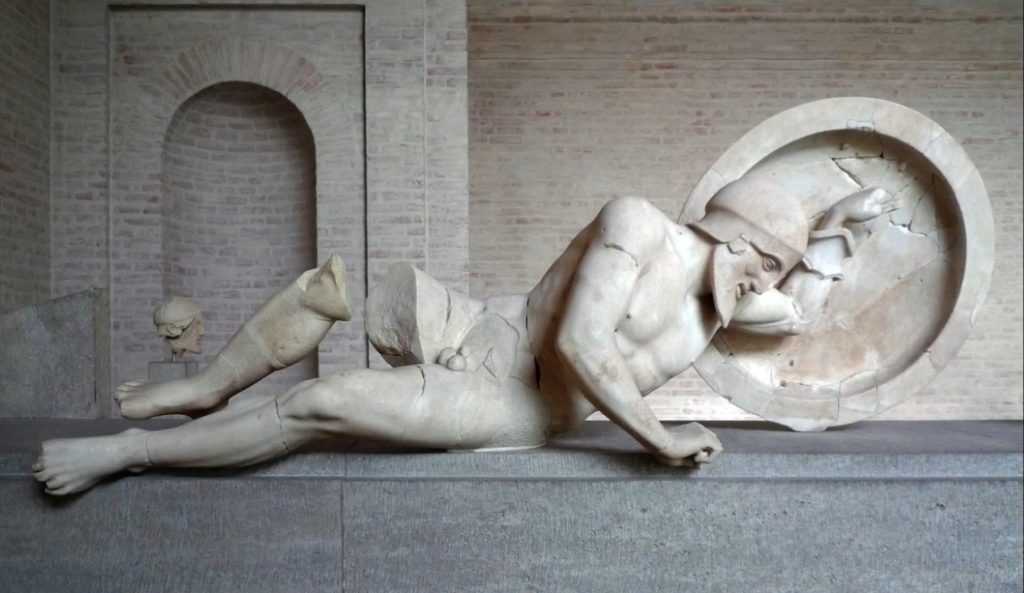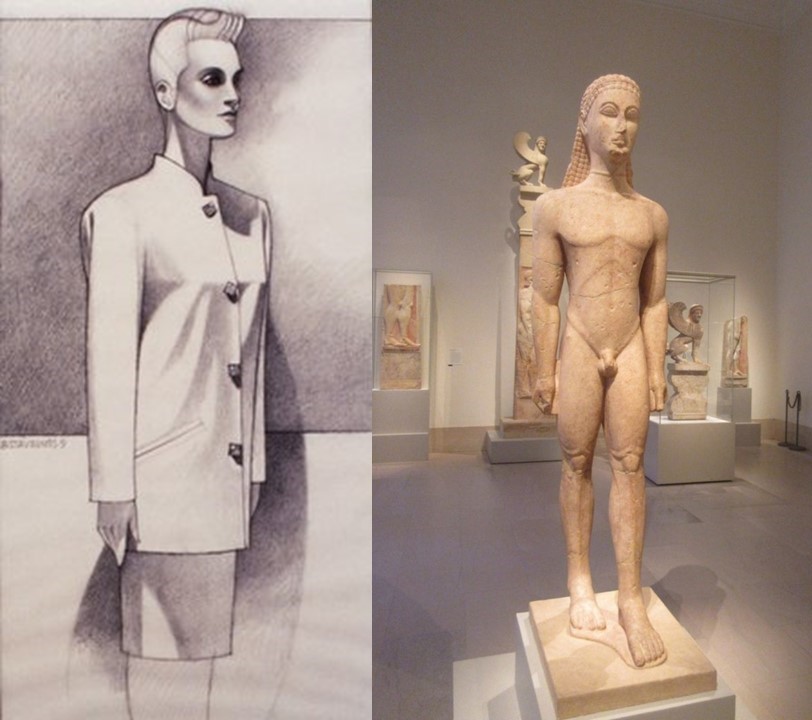By Nico Frederick, Wednesday, April 5, 2023
This whimsical Claire McCardell yellow silk dress from 1950 features a unique pattern of various bugs in navy blue, chartreuse, and lavender alongside fishing lures and the printed words ‘natural’ and ‘artificial’ in bold lettering (Figures 1-2). McCardell’s short-sleeve shirt dress with a slightly gathered skirt and black buttons trailing down the front is distinctive due to the textile used. For many reasons, the dress typifies the ‘American look’ that McCardell is recognized for.
The dress has a looser, unrestricted silhouette in comparison to the ultra-feminine ‘New Look’, a style originated by French couturier Christian Dior in 1947. The expansive use of wool, a previously rationed fabric during the war, within the original skirt of Dior’s design was emblematic of post-war European fashion that emphasized more above all else. Despite the small gathering at the waist of McCardell’s dress, the garment features an otherwise loose fit that neither requires shapewear or forces the consumer into a restricting style. Following her desire to allow women to get dressed themselves, McCardell uses center-front placed buttons as a closure as opposed to a side or back zipper that would require the aid of another person.
Whereas Parisian couturiers including Dior added surface detail to their designs through embellishment and various passementeries, McCardell’s designs often featured checkers, stripes, and unique patterning. During the post-war period, when McCardell was already considered a household name, American textile manufacturers were seeking new ways to promote their home-grown products. The magazine American Fabrics was particularly influential, encouraging USA textile brands to find their inspiration in fine art. This task was taken on by Dan Fuller, president at the time of Fuller Fabrics, who reached out to five of the most famous twentieth-century artists of the mid-century: Fernand Léger (1881–1955), Pablo Picasso (1881–1973), Marc Chagall (1887–1985), Joan Miró (1893–1983), and Raoul Dufy (1877–1953). The collaboration between these artists and the American manufacturer resulted in what was referred to as the Modern Masters Series.
McCardell’s bug-patterned dress appears like a prototype of the garments she made in collaboration with Fuller Fabrics, launched in the Fall of 1955. The Museum at FIT holds one of the garments from the collaboration which features a similar ‘shirtwaist’ style reminiscent of the bug dress (P92.9.1). The museum’s example is filled with graphic designs from the artist Fernand Léger, and it feels like a piece in conversation with her earlier work in that they both make use of playful textiles whilst remaining true to a simplistic, and inherently McCardell, American silhouette.
Since McCardell was already an established designer by 1955, she added prestige to the Modern Masters collection. By then, she had already had successes with her Monastic and Popover dresses and was one of the few designers featured on the cover of Time magazine. In the November 14th, 1955 issue of LIFE magazine, Claire’s collaboration was featured in the article “New Fabrics Put Modern Art in Fashion” alongside images of models in her resort designs posing next to the artists Chagall, Picasso, and more (Figure 3). The Picasso ‘fish’ pattern textile, featured in a dress of the LIFE photo essay, similarly resembles the bugs of her 1950 design (Figure 4). It is clear that patterning was an important design feature over the years of McCardell’s work. Whether it be the floral designs that marked her playsuits or the stripes featured in her variations of Popovers, patterning served as a way for McCardell to add uniqueness to her creations while at the same time not betraying her dedication towards simplicity.

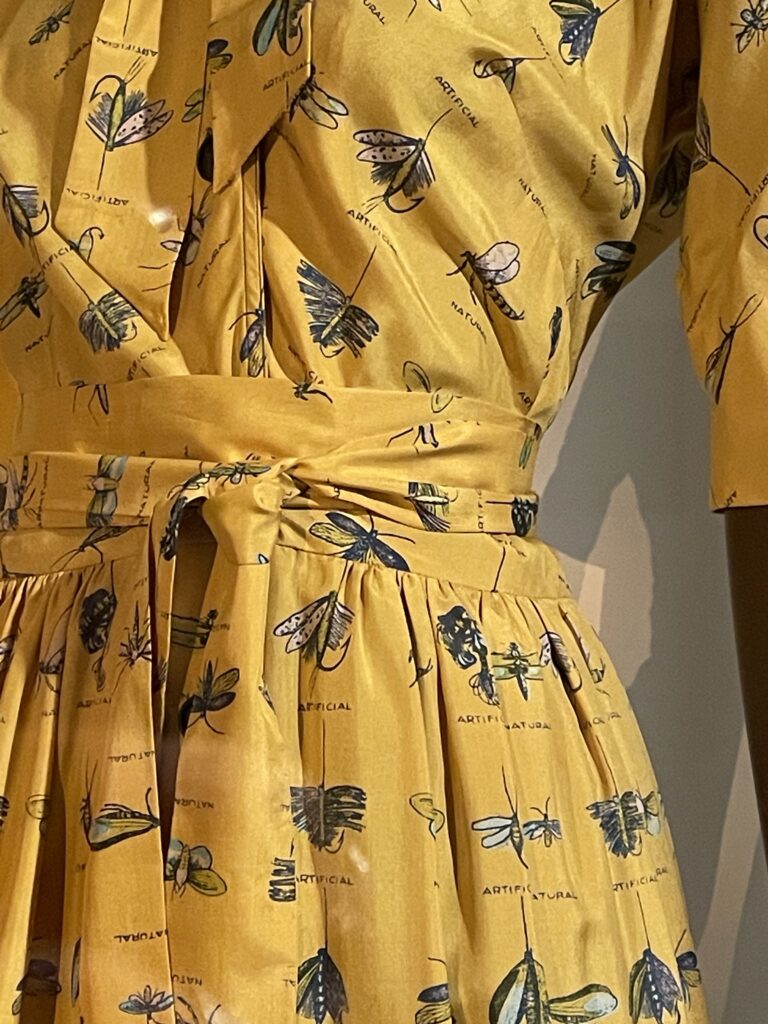
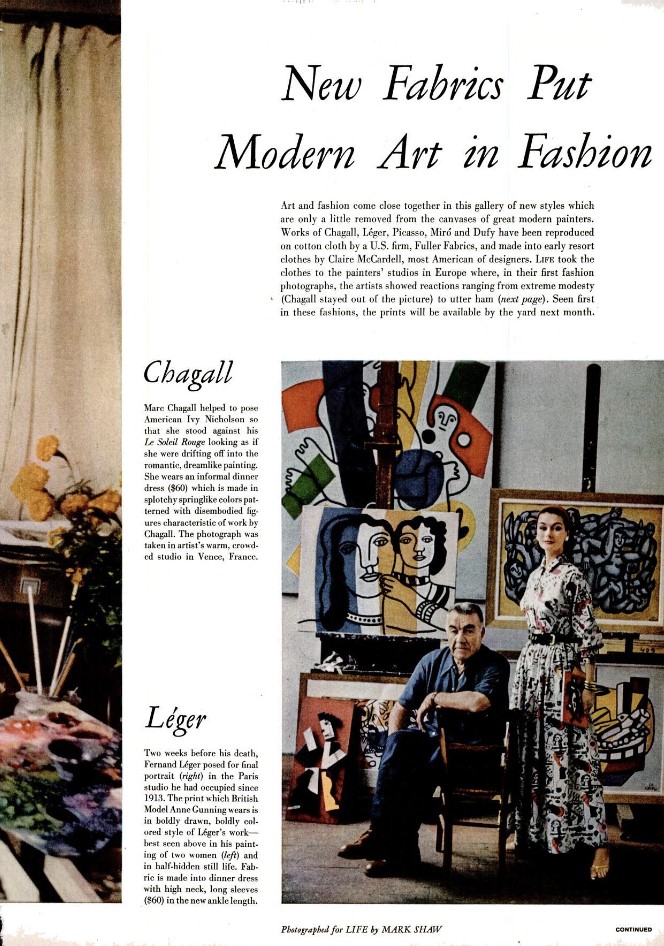
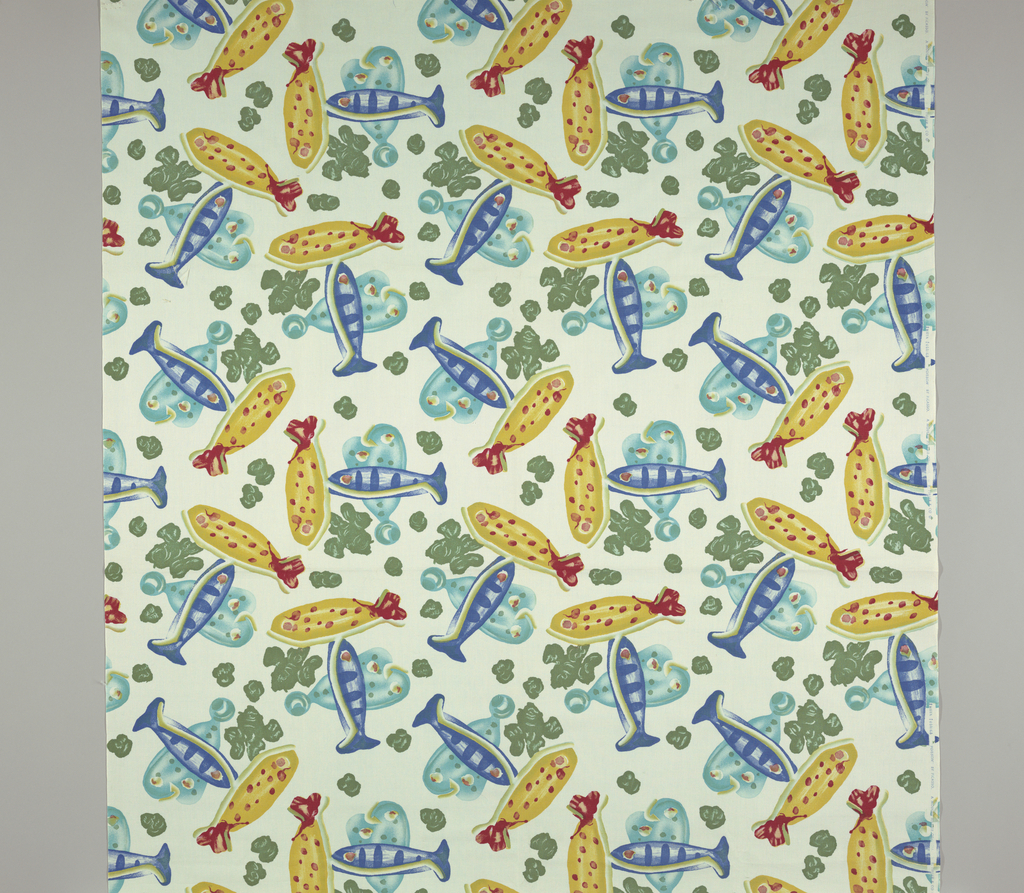
About the Author
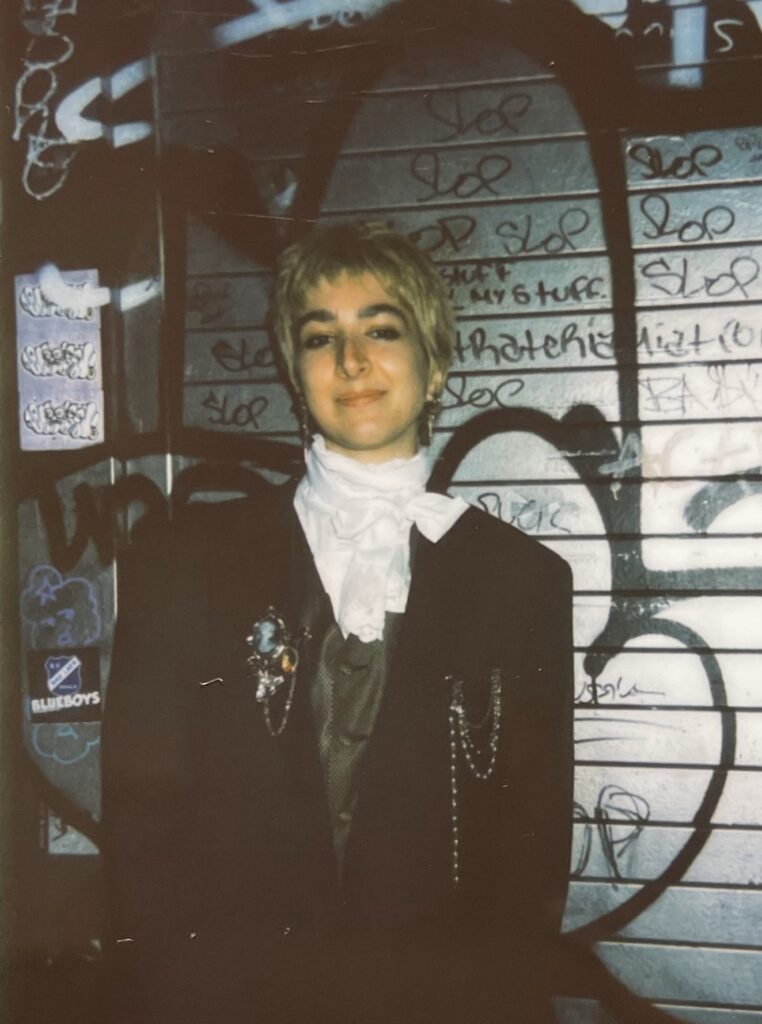
Nico Frederick (they/them/theirs) is a senior in the AHMP program and one of the curators of Claire McCardell: Practicality, Liberation, Innovation, on view at The Museum at FIT starting April 5th. Following graduation, Nico will be attending the Fashion and Textile Studies: History, Theory, and Museum Practice MA program here at FIT, hoping to one-day work with costume and dress within an archival or museum setting.
Further Reading
FIDM Museum. “Out and about with Claire McCardell.” FIDM Museum. FIDM Museum, September 25, 2009. https://fidmmuseum.org/2009/09/claire-mccardell-2.html.
Inc, Time. “New Fabrics Put Modern Art in Fashion” in LIFE. Google Books. Time Inc, 1955. https://books.google.com/books?id=zVQEAAAAMBAJ&pg=PA140&source=gbs_toc_r&cad=2#v=onepage&q&f=false.
Syracuse, Maleyne. “A Modern Masters Series Dress | Cooper Hewitt, Smithsonian Design Museum.” www.cooperhewitt.org. Cooper Hewitt, Smithsonian Design Museum, January 28, 2014. https://www.cooperhewitt.org/2014/01/28/a-modern-masters-series-dress/.
Syracuse, Maleyne. “Picasso’s Fish | Cooper Hewitt, Smithsonian Design Museum.” www.cooperhewitt.org. Cooper Hewitt, Smithsonian Design Museum, November 5, 2016. https://www.cooperhewitt.org/2016/11/05/picassos-fish/.
Yohannan, Kohle. “McCardell, Claire.” In The Berg Companion to Fashion, edited by Valerie Steele, 504-505. Oxford: Bloomsbury Academic, 2010. http://dx.doi.org/10.5040/9781474264716.0011067

